Ever wondered about the incredible world of rhinos? These big, gentle animals hold secrets that might surprise you.
From their thick skin, and unmistable horns, to their love for munching on leaves, there's a lot to know. Join us on a journey into the inner world of rhinoceros as we uncover the cool and curious things that make rhinos outstanding creatures.
There are 5 existing rhino species - 2 native to Africa and the other 3 native to Asia. The African Rhino species are the Black rhinoceros and the White rhinoceros.
In this article, we'll look at some interesting facts and characteristics that make rhinos incredible animals. While most characteristics cut across all the rhino species, we will tend to focus more on the rhinos found in Africa.
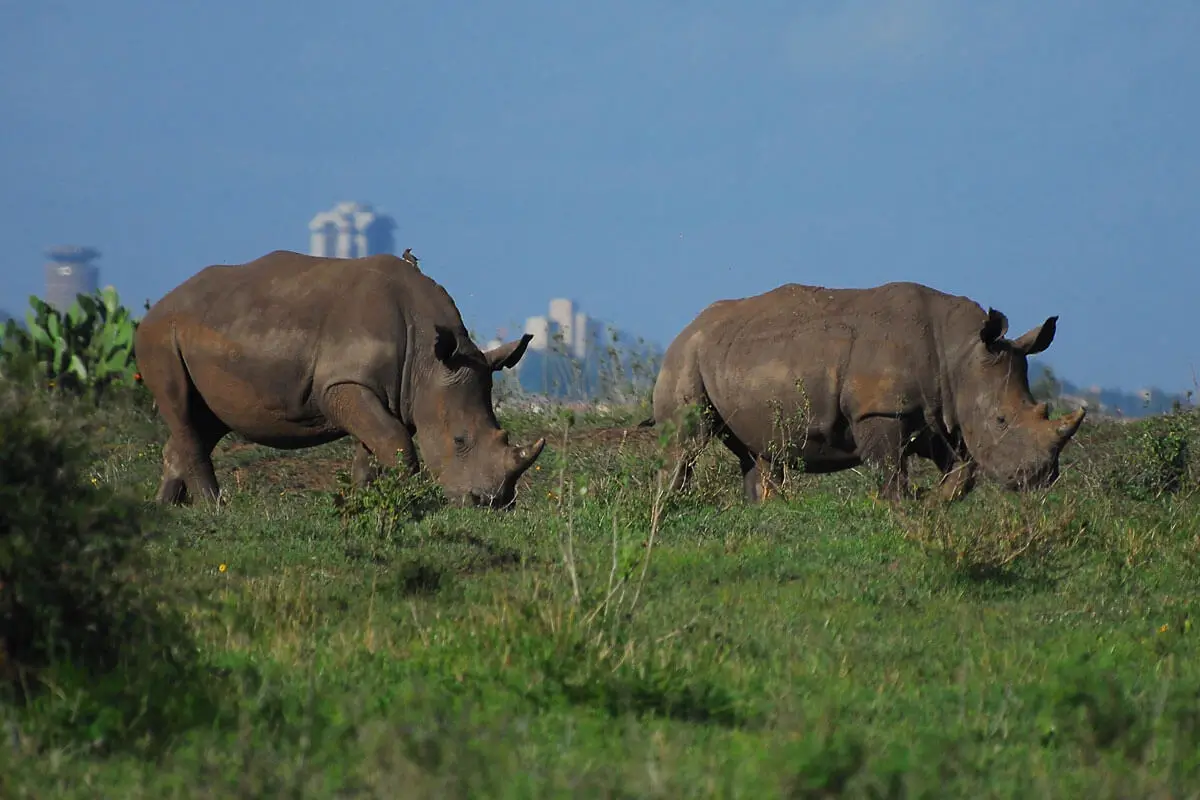
Facts About Rhinos
1. Name Origins
The word "rhinoceros" has Greek origins. It comes from two Greek words: "rhino," which means "nose," and "keras," which translates to "horn." So, when combined, "rhinoceros" literally means "nose horn."
This name perfectly describes these magnificent creatures, highlighting their most distinctive feature: the horn on their noses.
2. Rhino's Size
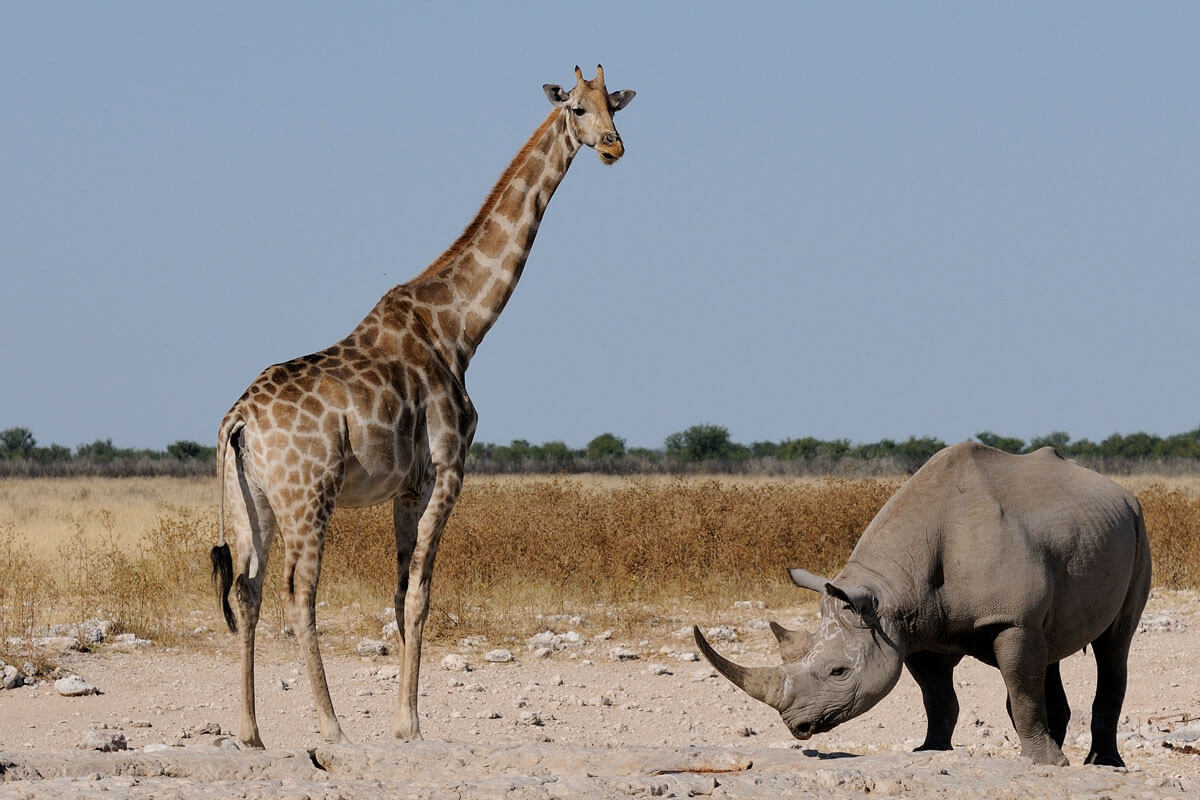
A rhinoceros is the 2nd largest land animal after the African elephant. The White Rhinoceros found in Africa is the biggest of the remaining rhino species.
On average, adult rhinos stand at about 1.4 to 1.8 meters (4.6 to 5.9 feet) tall at the shoulder. From the tip of their nose to the end of their tail, they measure around 3.5 to 4.6 meters (11.5 to 15 feet) long.
To put this into perspective, an average rhino is as big as a Volkswagen Golf.
3. Rhino's Weight
Rhinos are the second heaviest land animal and can weigh up to 2400 kilograms. All the remaining species of rhinoceros weigh more than 1 tonne (1,000 kilograms). Female rhinos are smaller and weigh up to 1600 kilograms.
These are the recorded average maximum size for adult white rhinos which is the largest of the rhinoceros species.
Related article: List of the heaviest African animals
4. The Rhino's Horn
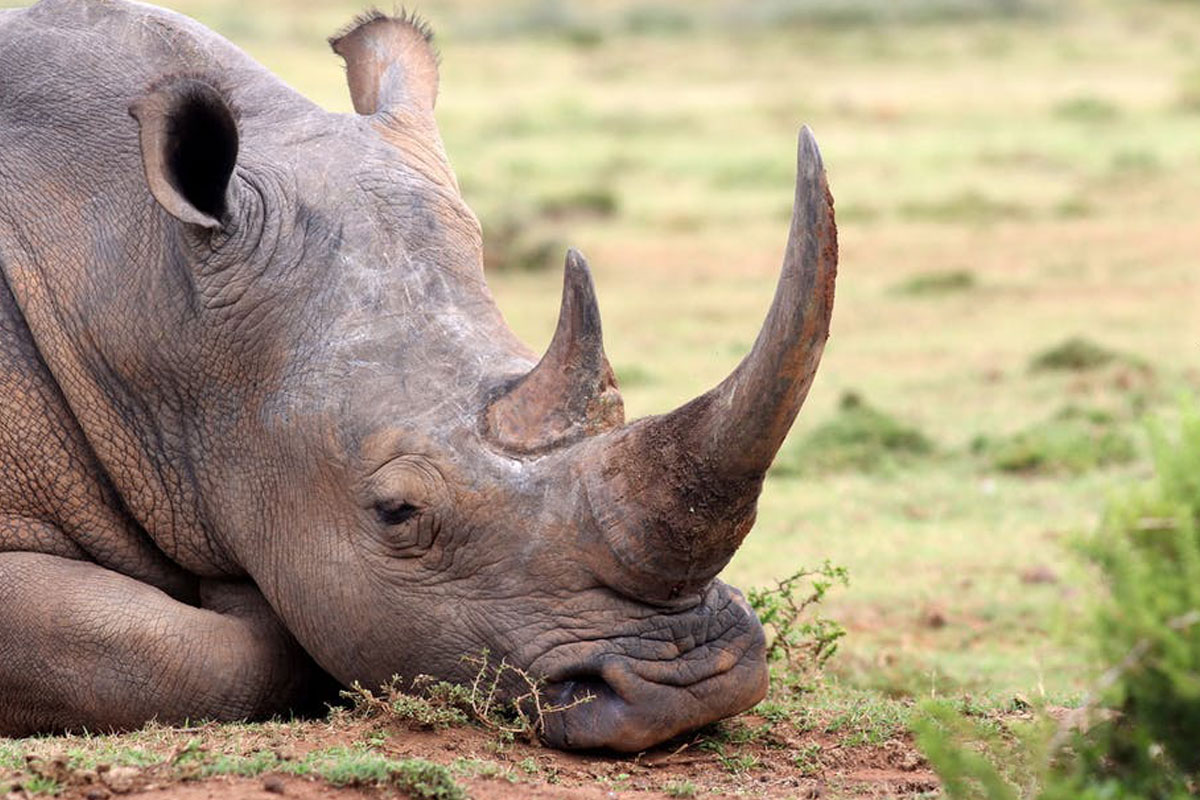
The easiest way to identify a rhino is by its horn. A rhino's horn can grow significantly throughout its whole life and reach up to 150 cm (1.5 meters).
African Rhinos have two horns on their head and the front horn is usually the larger one. At times, a third horn will also grow in any of the African rhino species.
While the rhino's horn is highly sought after by poachers who supply the illegal black market in wildlife, the horn is made up of the same components as human hair or fingernails.
5. A Rhino's Thick Skin
Rhinoceros have thick skin that can measure between 1.5 and 5 centimetres thick. The skin is formed from layers of collagen.
Besides having thick skin, the rhino's skin is very sensitive - just the same way as the elephant's skin.
6. Difference Between Black & White Rhino
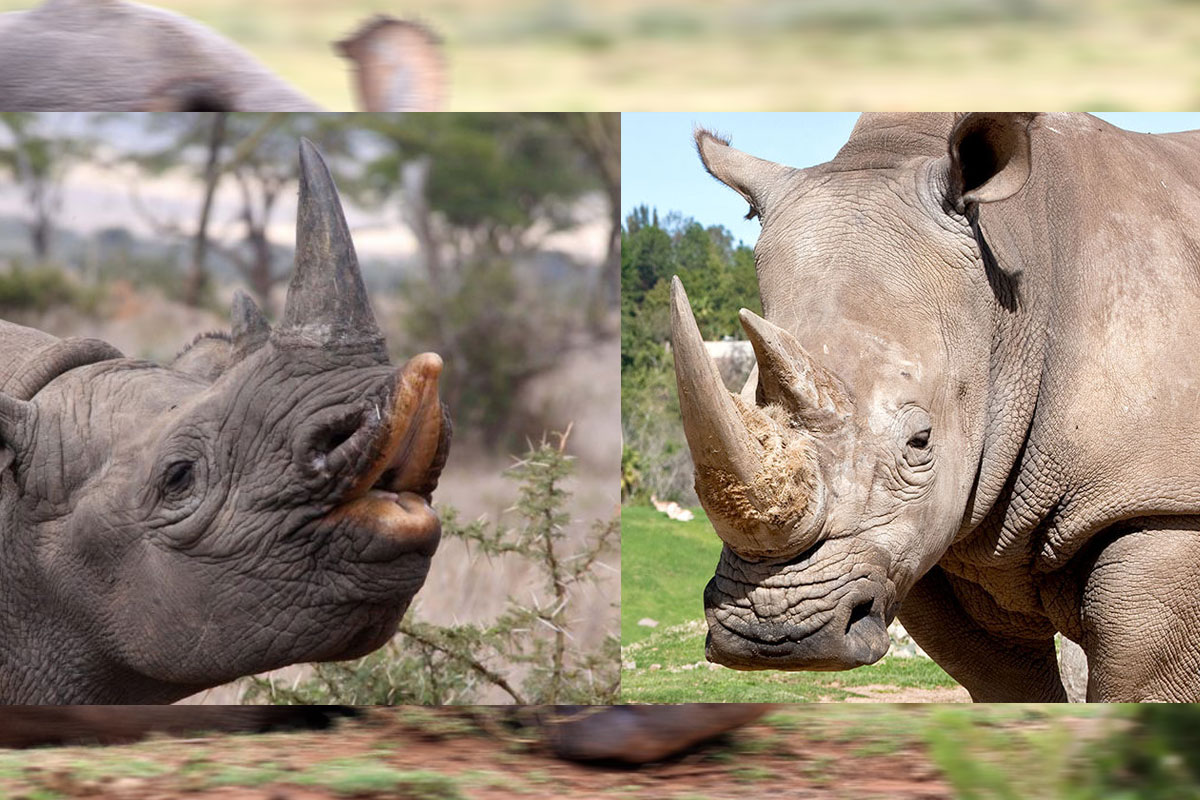
Unlike the naming, Black and white rhinos have the same dark grey-looking skin. The only easily noticeable physical difference is in the shape of their mouths.
The black rhino has pointed lips whereas the white rhino has wide/square lips. Other differences are in their sizes but those are hard to tell with the naked eye.
7. Wild Habitat Of Rhinos
Rhinos in Africa live in a variety of habitats ranging from savannas and grasslands to dense forests and wetlands. They easily adapt to different environments as long as they can find food and water.
Rhinos can now be found in various national parks and protected areas in Eastern and Southern Africa.
It is worth noting that rhinos used to have a much larger habitat range, extending into northern Africa but has since reduced to fragmented portions south of the Sahara desert.
Here is a habitat map to put everything into context.
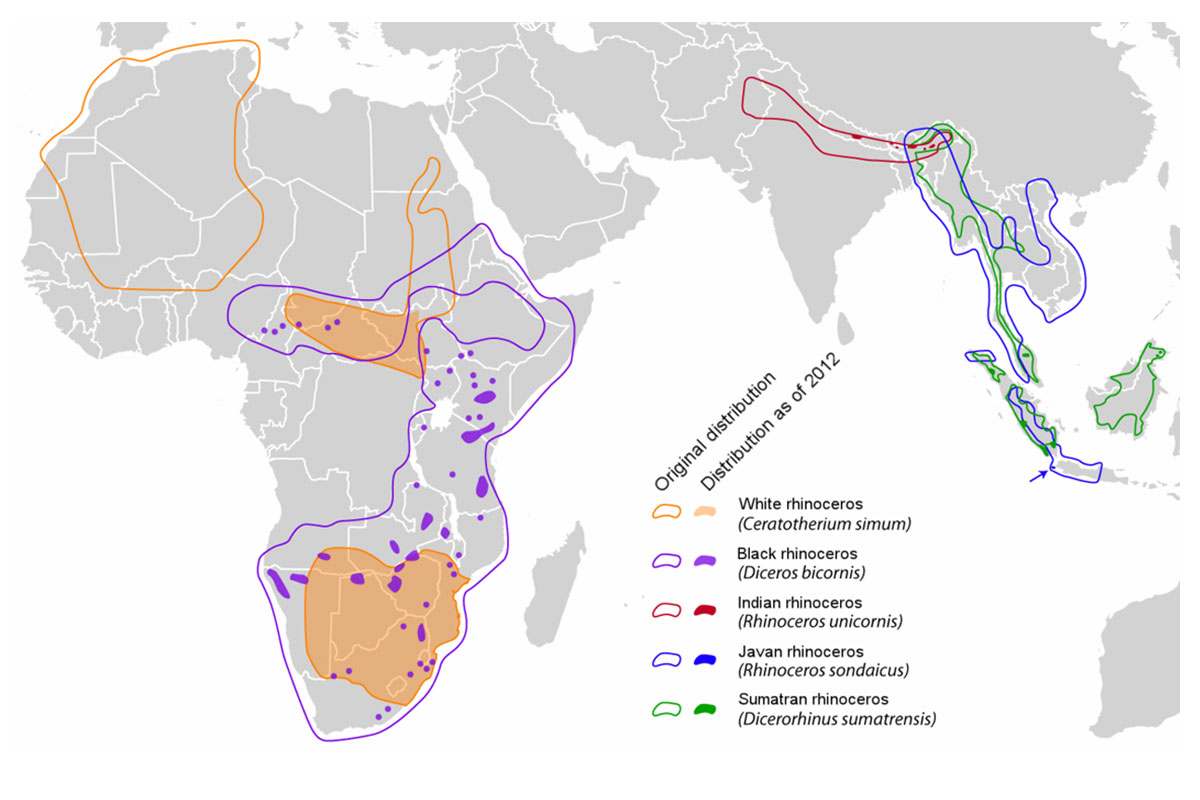
8. Where To See Rhinos In The Wild
Rhinos can be found in Africa and Asia. In Africa, Rhinos inhabit the grasslands and floodplains of Eastern and Southern Africa.
African rhinos can be found in wild places in the following countries.
|
|
|
|
|
|
|
|
|
|
|
9. What Rhinos Eat
Rhinos are herbivores, which means they primarily eat plants. Their diet mainly consists of grasses, leaves, branches, and fruits.
Rhinos are known to be selective feeders, choosing different types of plants based on their availability and the specific rhino species. Adult rhinos eat around 50 kilograms of food each day.
Related article: What rhinos eat in the wild. Diet & eating habits.
10. How Rhinos Communicate
Rhinos communicate in many ways such as through vocalizations, scent, body language, and Infrasonic communication.
Rhinos can squeal, snort, moo, growl, and even make a trumpet sound. Their sense of smell is very good and can communicate through their dung (mitten) and urine.
Body language is also used by rhinos to communicate. For example, flattening their ears or rubbing against each other to show affection. Infrasonic communication occurs at a frequency that cannot be heard by humans
11. A Crash Of Rhinos
A group of rhinos is called a 'herd' or 'crash'.
Black rhinos are often solitary whereas the white rhinos are a bit social. Rhinos are not strictly territorial and at times their territory will overlap leading them to share feeding grounds, wallows, and water points.
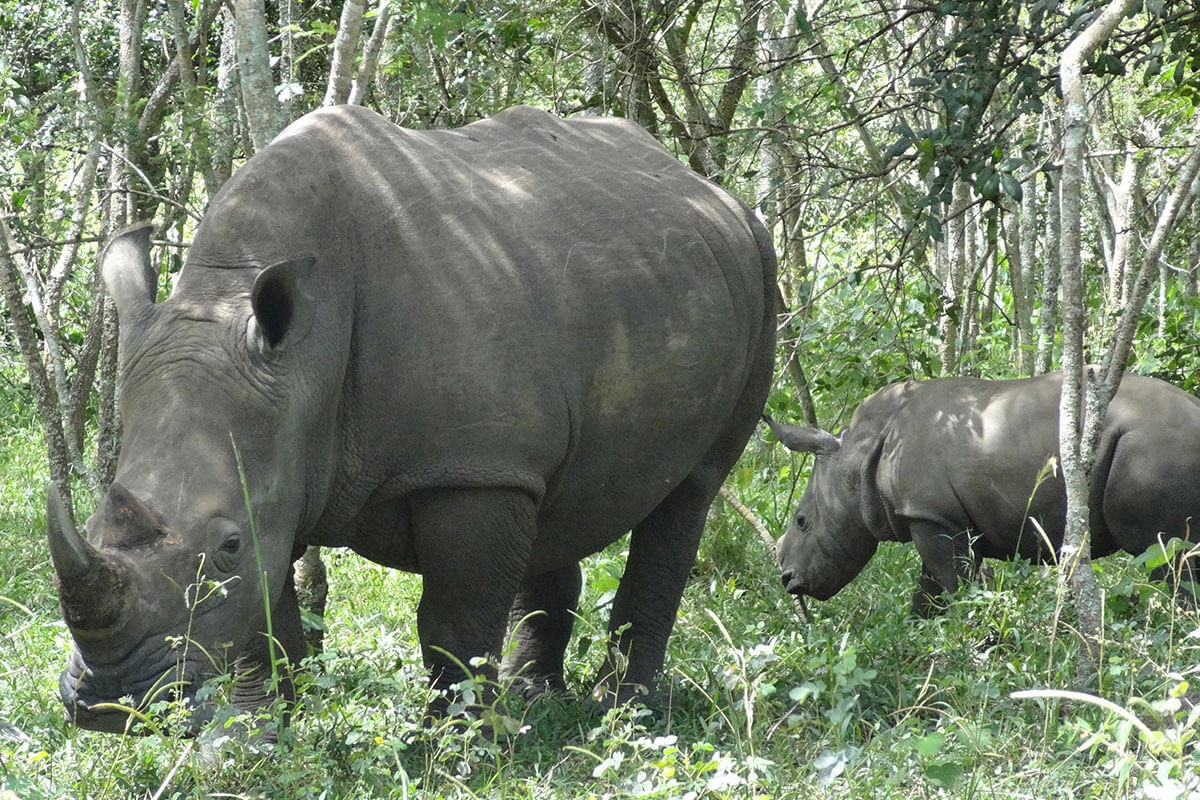
12. How Rhinos Reproduce
Rhinos reproduce by carrying their fetuses for a pregnancy period of up to 18 months often giving birth to one calf. The various species of rhinos give birth after a period of up to 18 months of pregnancy.
| # | RHINOCEROS SPECIES | PREGNANCY PERIOD |
|---|---|---|
| 1 | White Rhino | 16 to 18 months |
| 2 | Black Rhino | 15 to 16 months |
A baby rhino is called a calf and can weigh between 40 and 60 Kilograms at birth. Rhinos are solitary animals and the mother takes care of the calf on her own until the young rhino learns all the necessary skills for independence.
13. Lifespan Of Rhinos
A Rhinoceros can live between 35 and 40 years in the wilderness. Rhinos in the zoo can live much longer.
In the wild, rhinos face different challenges, especially habitat destruction, and poaching for their horns. In a captive environment of the zoo where these challenges are not faced, rhinos do live up to 50 years.
While threats from other predators in the wild exist, this is rare and happens to young rhinos which are still small and weak.
Related article: Comparing the lifespan of African wild animals
14. Are Rhinos Dangerous?
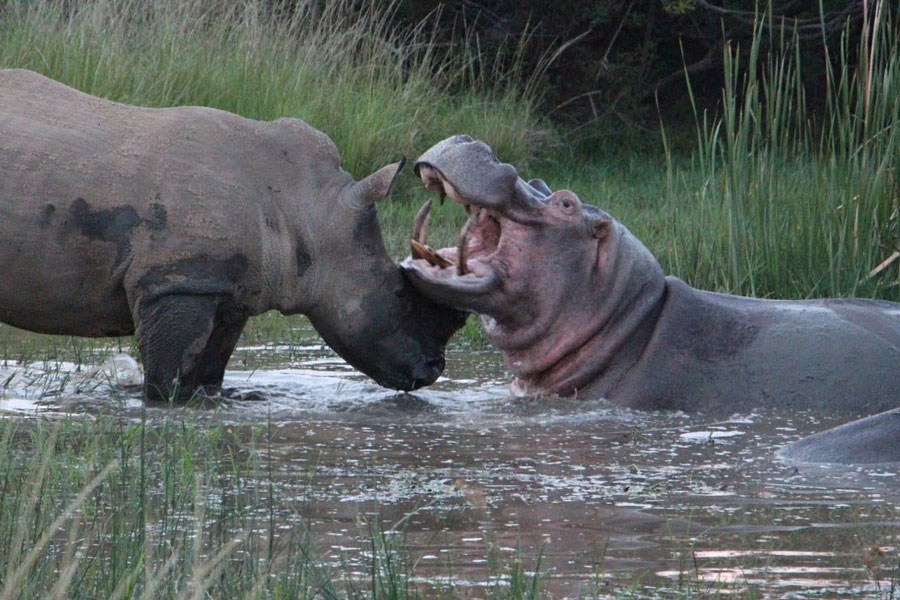
With a strong horn at the front and centre of its head, a rhino seems like an animal built to battle out any rival in the African savannah. Rhinos generally prefer keeping to themselves and are quite calm and less threatening.
Despite this peaceful attitude, Rhinos do charge toward any sign of danger at high speeds. A rhino can run at a speed of up to 55 kilometres per hour - which is much faster than an average human. That is faster than the fastest human, Usain Bolt.
Black rhinos do fight with each other and more than 30% of those fights end in death for one of the rhinos.
White rhinos might not start a fight, they can handle their fights. A rhino is one of the animals that even the dangerous hippos don't pick a fight with.
15. Why Rhinos Are Poached
Rhinos are poached for their horn and at times other body parts too. This is mainly for the black market trade in endangered animal products.
These rhino parts, especially the horn are believed to have healing qualities and thus command a high price, especially in Eastern Asia. The Rhino horn sells for the same price as gold - sometimes even higher.
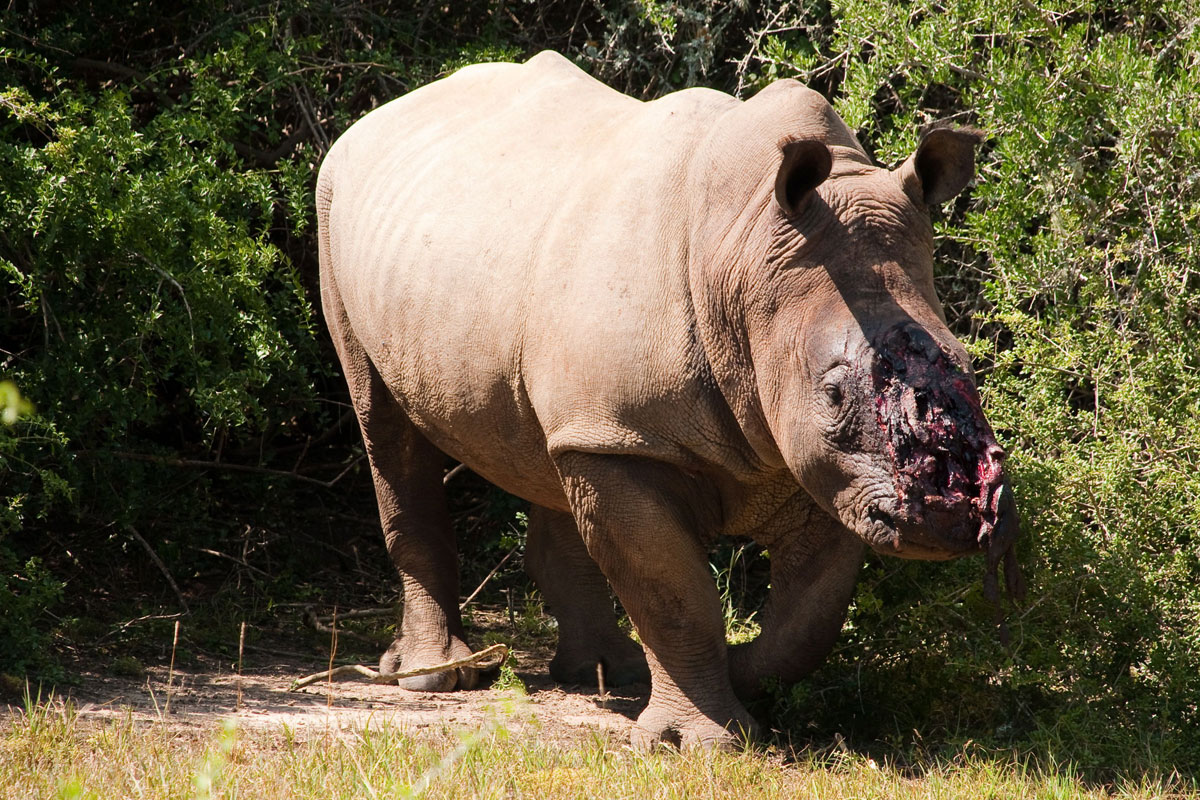
Other black market buyers are collectors who want animal products as trophies.
Aside from the poaching, adult rhinos have no predators in the wilderness. Young rhinos can however be preyed on by lions, hyenas, African wild dogs, and crocodiles.
Rhinos face another human threat in terms of habitat loss. Increasing human populations lead to increasing human activity that ends up taking more land and encroaching on the habitat that rhinos call home.
16. Conservation Status
Because of the poaching and decreasing habitat, the rhinos are generally in danger of extinction. Some of the 5 species are stable, others are not.
Let us look at the conservation status of each of the species since the dangers they face are serious.
| RHINO SPECIES | POPN. TREND | ESTIMATED NUMBERS | IUCN REDLIST CASS |
|---|---|---|---|
| White Rhino | Decreasing | 10,080 | Near Threatened |
| Black Rhino | Increasing | 3,142 | Critically Endangered |
| Indian (Great One-horn) Rhino | Increasing | 2,200 | Vulnerable |
| Sumatran Rhino | Decreasing | 30 | Critically Endangered |
| Javan Rhino | Stable | 18 | Critically Endangered |
The estimated population numbers are from the International Union for the Conservation of Nature and Natural Resources (IUCN Redlist).
Final Thoughts
Rhinos are interesting animals that are fun to see in their natural environment. The fact that they get killed for what is essentially human hair is unimaginably sad and yet true.
When you go on safari to see some of these animals, including rhinos, we do hope that this prior knowledge makes your fascination with them, and your time in the wild even more elevated.
Tourism activities such as visiting the national parks help generate some money which protects these habitats for rhinos and other animals that share the ecosystem. Tourism also leads to many other economic benefits for the locals.
We think tourism is playing a major role in the conservation of animals (not just rhinos) and nature as a whole.
If this article can play the tiniest role in discouraging the rhino horn trade, and encourage just one person to add rhinos to their itinerary, we'll consider it a success.
